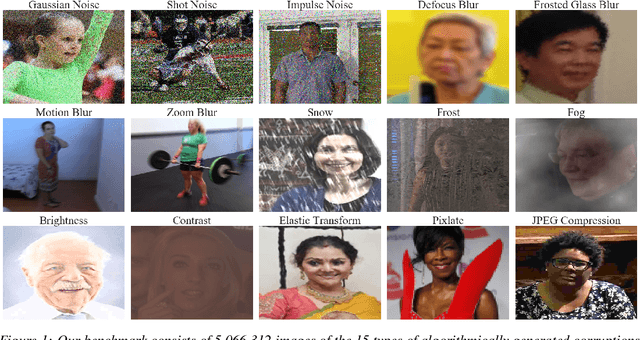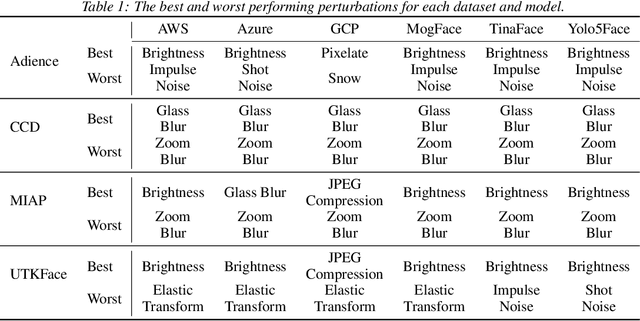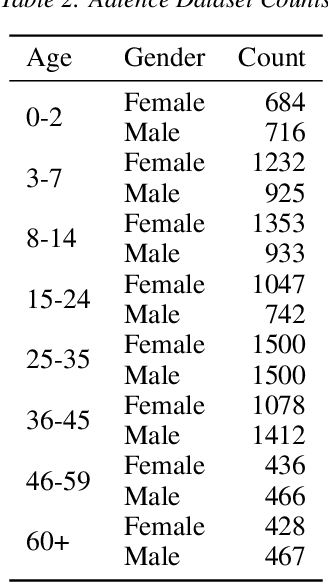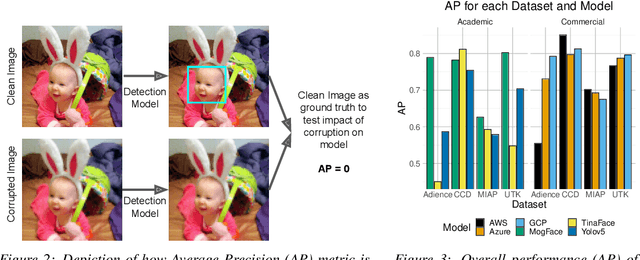George Z. Wei
Robustness Disparities in Face Detection
Nov 29, 2022



Abstract:Facial analysis systems have been deployed by large companies and critiqued by scholars and activists for the past decade. Many existing algorithmic audits examine the performance of these systems on later stage elements of facial analysis systems like facial recognition and age, emotion, or perceived gender prediction; however, a core component to these systems has been vastly understudied from a fairness perspective: face detection, sometimes called face localization. Since face detection is a pre-requisite step in facial analysis systems, the bias we observe in face detection will flow downstream to the other components like facial recognition and emotion prediction. Additionally, no prior work has focused on the robustness of these systems under various perturbations and corruptions, which leaves open the question of how various people are impacted by these phenomena. We present the first of its kind detailed benchmark of face detection systems, specifically examining the robustness to noise of commercial and academic models. We use both standard and recently released academic facial datasets to quantitatively analyze trends in face detection robustness. Across all the datasets and systems, we generally find that photos of individuals who are $\textit{masculine presenting}$, $\textit{older}$, of $\textit{darker skin type}$, or have $\textit{dim lighting}$ are more susceptible to errors than their counterparts in other identities.
Are Commercial Face Detection Models as Biased as Academic Models?
Jan 25, 2022



Abstract:As facial recognition systems are deployed more widely, scholars and activists have studied their biases and harms. Audits are commonly used to accomplish this and compare the algorithmic facial recognition systems' performance against datasets with various metadata labels about the subjects of the images. Seminal works have found discrepancies in performance by gender expression, age, perceived race, skin type, etc. These studies and audits often examine algorithms which fall into two categories: academic models or commercial models. We present a detailed comparison between academic and commercial face detection systems, specifically examining robustness to noise. We find that state-of-the-art academic face detection models exhibit demographic disparities in their noise robustness, specifically by having statistically significant decreased performance on older individuals and those who present their gender in a masculine manner. When we compare the size of these disparities to that of commercial models, we conclude that commercial models - in contrast to their relatively larger development budget and industry-level fairness commitments - are always as biased or more biased than an academic model.
 Add to Chrome
Add to Chrome Add to Firefox
Add to Firefox Add to Edge
Add to Edge